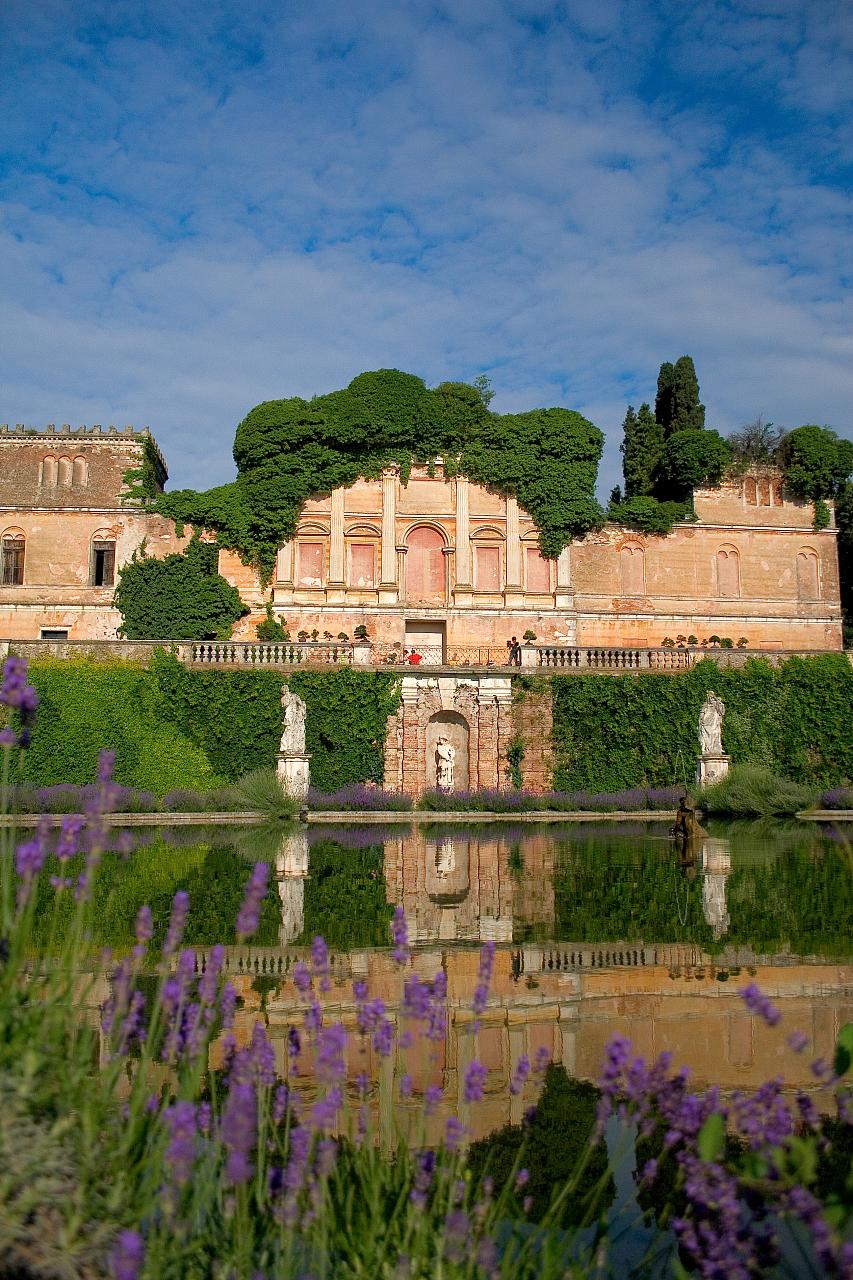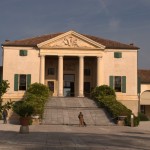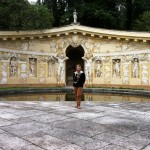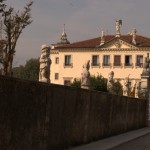Born as a farm in the countryside, it is the first Palladian Villa
Venetian Villas: Villa Trissino Marzotto
On a hill near Vicenza, its first owner was Palladio’s patron
Slow Tour in Veneto, looking for Palladian Villas. Villa Trissino Marzotto stands on a hill in the area among Valdagno, Arzignano and Vicenza. Since the Middle Age, it had been the fortress of the German family Trixen, who probably used to rob the travellers. Little by little, they became more civilized till they changed the surname in the Italian word Trissino. Gian Giorgio Trissino was the noble and cultured gentleman who seems to have invented the plot of Romeo & Juliet, from that Shakespeare drew inspiration. He was also interested in linguistics.
Gian Giorgio Trissino recognized the genius of Andrea Di Pietro, he paid for his studies and he renamed this talented young man Andrea Palladio, just like the Angel of one of his poems. Actually, we don’t know if Gian Giorgio had something to do with Villa Trissino. However, the villa had been extended in the 15th century and finished in the 18th century by the famous architect Muttoni.
The name of this villa is composed by the one of the very first owner and the one of the last one. During the ’50s Pietro Marzotto bought the villa for his son Giannino, who loved this place so much and took care of it up to his death, only few months ago. Going on a tour of Villa Trissino Marzotto together with our friend Bona Zanuso as a guide is an amazing experience: all the rooms are extraordinary (the Golden Room, the Blue Living Room, etc.), the outside of the house is totally fascinating (with typical Italian garden, the statues etc.), but the out and out treasures are three, besides the frescoes.
The most precious one is the Gonzaga’s tapestries collection, bought by the Marzotto family: it is the most important private collection of tapestries of the Renaissance. The second treasure is the house in its every-day aspects: it could happen to find an old palanquin from the 18th century which contains a television! Would you imagine the Count Marzotto looking at the football match? More probably, he used it to look at some car races: he was one of the best racer of the last century and his office is still full of his trophies. He even won twice the famous car race Mille Miglia. What about the third treasure? The salted codfish cooked by the chef who helps Bona Zanuso to organize the parties: he is Slav but he is able to cook better than one from Vicenza.
Your tour looking for Palladian Villas continues
⇒ Watch the full web serie Palladian Villas Tour in Veneto
Main pic courtesy of Umberto Nicoletti (Flickr User)
Video Full Text: Villa Trissino Marzotto
These places always have a fascinating history.
That piece of building began life as a medieval castle in 900 A.D.
The Trixens came here from Germany.
They were Germanic, warriors and soldiers of fortune.
They built the fortress and anyone passing through had to pay a toll.
Over time the Trixens grew to be more refined and became the Trissinos.
In the 16th century Gian Giorgio Trissino was a famous patron of the arts.
He discovered a promising young stonemason and sent him to Rome to study.
He was later to become Palladio.
He scribbled down a rough draft of a comedy that eventually was to become the nucleus of the tale of Romeo and Juliet, later developed by Shakespeare.
This is the history of these places.
The Villa, built in the 18th century, is where everything became very refined and truly lavish.
The beauty of Venetian Villas is that they are truly inhabited and lived in.
They have the capacity to put across an atmosphere that is at the same time both historical and current.
There are constant contaminations between the monumental and the everyday context.
The villa was then bought by Gaetano Marzotto for his son, Giannino.
It was looked after and renovated.
Bona Zanuso is the “vestal” of Villa Trissino Marzotto
We are in the treasure room!
A collection of tapestries is on show here.
They have an incredible history.
It is one of the world’s largest private collections.
They were the travelling rugs of the Gonzaga Family.
Each tapestry must weigh at least one tonne, and they seriously don’t look as though they were for travelling.
The patterns are by Raffaello and Giulio Romani, really important artists.
They are of Flemish manufacture from the Belgian maker, Willen de Pannemaker.
These tapestries are very rare.
During an assault the invaders would normally burn them.
They were too heavy to be transported.
The glints you can see are the threads of gold and silver with which they were woven.
So they would burn the tapestries and melt down the precious metals to take away with them.
Thankfully these tapestries were spared.
Having been informed of an imminent attack, the Gonzaga family sold them to antique dealers.
This was in order to raise cash for their escape.
That’s how they ended up scattered around the world.
Gaetano Marzotto saw two and was captivated by them.
And that’s how his adventure to rebuild the original collection began.
Produced in cooperation with the Official Tourist Board
















